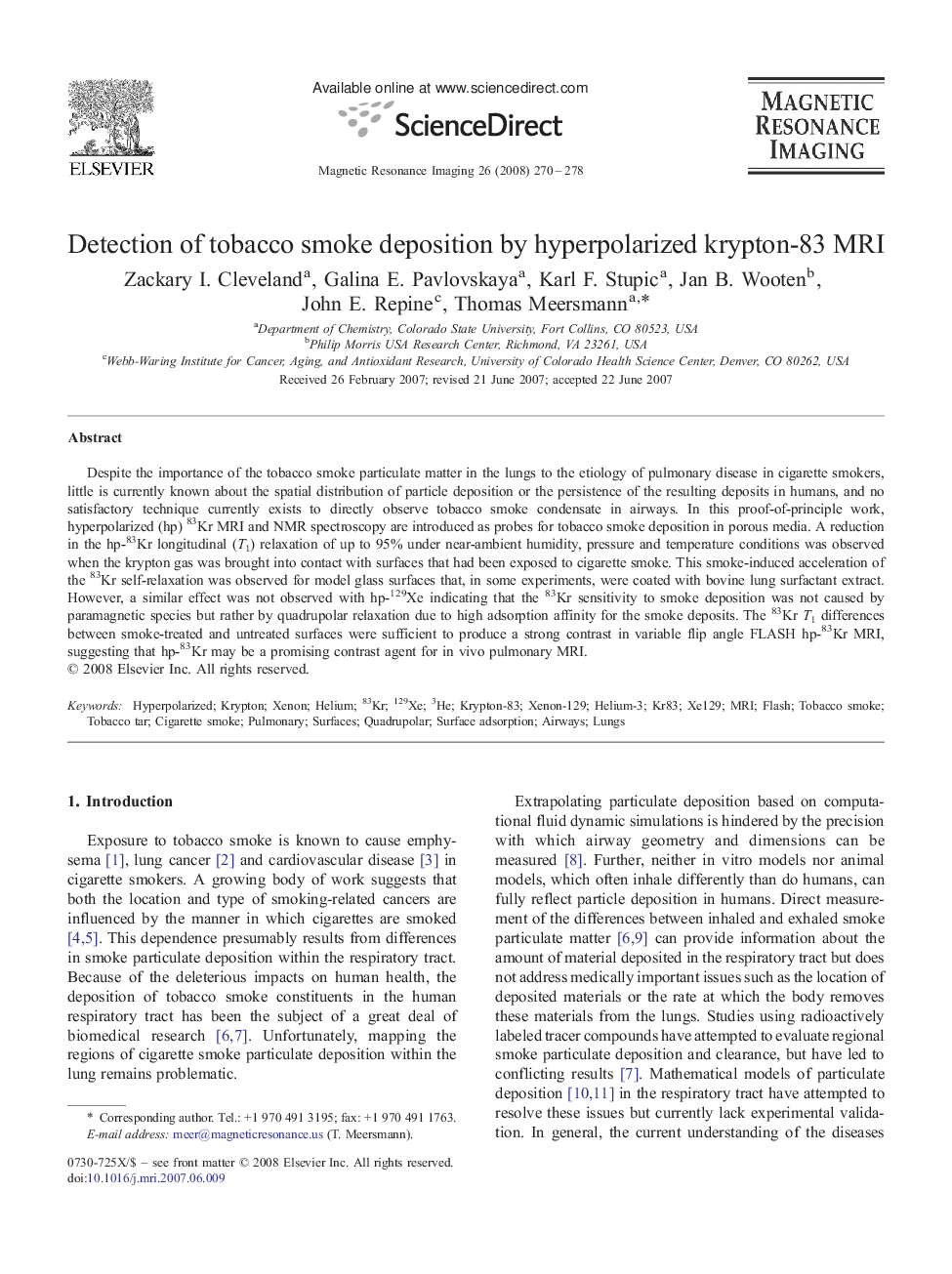| Article ID | Journal | Published Year | Pages | File Type |
|---|---|---|---|---|
| 1807674 | Magnetic Resonance Imaging | 2008 | 9 Pages |
Despite the importance of the tobacco smoke particulate matter in the lungs to the etiology of pulmonary disease in cigarette smokers, little is currently known about the spatial distribution of particle deposition or the persistence of the resulting deposits in humans, and no satisfactory technique currently exists to directly observe tobacco smoke condensate in airways. In this proof-of-principle work, hyperpolarized (hp) 83Kr MRI and NMR spectroscopy are introduced as probes for tobacco smoke deposition in porous media. A reduction in the hp-83Kr longitudinal (T1) relaxation of up to 95% under near-ambient humidity, pressure and temperature conditions was observed when the krypton gas was brought into contact with surfaces that had been exposed to cigarette smoke. This smoke-induced acceleration of the 83Kr self-relaxation was observed for model glass surfaces that, in some experiments, were coated with bovine lung surfactant extract. However, a similar effect was not observed with hp-129Xe indicating that the 83Kr sensitivity to smoke deposition was not caused by paramagnetic species but rather by quadrupolar relaxation due to high adsorption affinity for the smoke deposits. The 83Kr T1 differences between smoke-treated and untreated surfaces were sufficient to produce a strong contrast in variable flip angle FLASH hp-83Kr MRI, suggesting that hp-83Kr may be a promising contrast agent for in vivo pulmonary MRI.
